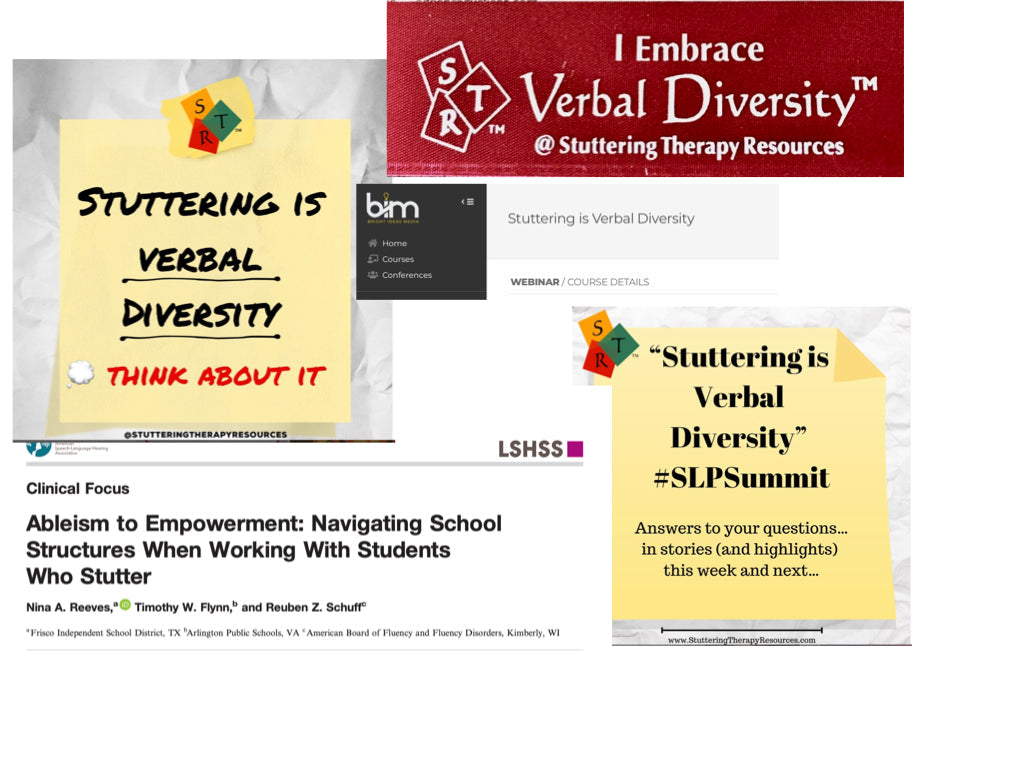The Emergence of Verbal Diversity
Before we delve into the concept of "verbal diversity," it's essential to understand the background of stuttering in society. In brief, stuttering has historically been viewed as a flaw, a burden, or something that needed to be "fixed." People who stutter have been subjected to therapies aimed at eliminating their disfluencies. This type of therapy has frequently led to frustration, low self-esteem, and a sense of inadequacy. This approach has not only been ineffective but has also perpetuated a negative stigma around stuttering.
In 2020, STR’s own Nina Reeves introduced the term "verbal diversity" to continue to challenge the conventional view of stuttering and encourage a more inclusive perspective. The concept of verbal diversity recognizes the need for a paradigm shift and centers around the idea that stuttering is just one of many ways people express themselves verbally, and it should be accepted and celebrated as such.
The Connection to Neurodiversity
"Verbal diversity" also aligns with the broader neurodiversity movement, which aims to celebrate and accommodate neurological differences. The neurodiversity paradigm encourages society to view conditions like autism, ADHD, and yes, stuttering, not as problems to be solved but as natural variations in human experiences and communication.
By framing stuttering within the context of neurodiversity, speech-language pathologists (SLPs) and individuals who stutter can participate in the larger conversation about acceptance and inclusivity for all neurodivergent individuals. This intersectionality fosters a collective understanding that the challenges faced by people who stutter are not isolated but are part of a broader narrative of diversity and inclusivity.
Verbal Diversity and Stuttering Therapy
It is our hope that the term verbal diversity helps to reframe the way society perceives stuttering. As the concept continues to promote acceptance, empowerment, and unity with the stuttering community, we also hope it encourages a broader conversation about neurodiversity in the profession of speech-language pathology and in the broader systems of education and society as a whole.
SLPs play an important role as therapists and allies for those who stutter. Stutter-affirming speech therapy can be a part of a comprehensive journey of learning to navigate stuttering in a world that doesn't understand it.
Do We Still Work with People who Stutter?
Short answer - YES! Verbal diversity does NOT change eligibility or the fact that we are communication specialists, most equipped to support those who stutter in their journey of navigating stuttering in a world that doesn't understand it!
Final Thoughts
In adopting this perspective, we move away from the antiquated notion that stuttering needs to be "fixed" and instead embrace the rich tapestry of human verbal expression, recognizing that diversity in all communication is something to be celebrated. The journey toward a more inclusive and understanding society is ongoing, and verbal diversity is poised to play a crucial role in advancing the cause of acceptance for people who stutter and all neurodivergent individuals.
Let Us Know!
How does verbal diversity resonate with you? Would love to hear from you! Send questions and comments to Info@StutteringTherapyResources.com. Join the discussion and be a spark for the movement!
For more on this topic, check out the following references:
Reeves, N. A., Flynn, T. W., & Schuff, R. Z. (2023). Ableism to empowerment: Navigating school structures when working with students who stutter. Language, Speech, and Hearing Services in Schools, 54(1),8-26. https://doi.org/10.1044/2022_LSHSS-22-00026
Reeves, N., & Yaruss, J. S. (In Press) Go-To-Guide: Getting Started with School-Age Stuttering Therapy. Stuttering Therapy Resources, Inc. https://stutteringtherapyresources.com/products/gtg-getting-started-with-school-age-therapy





